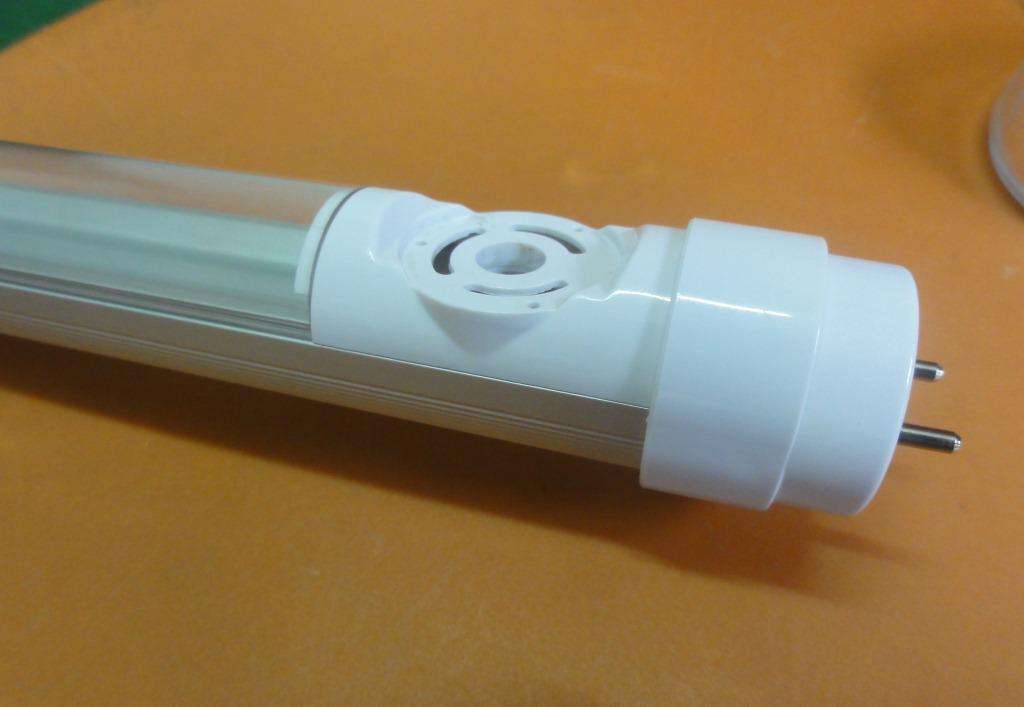Reasons for durability of LED fluorescent tubes
The luminous principle of incandescent lamp is that electric energy stops heating the luminous tungsten wire and emits light. After proper heating for a long time, the tungsten wire will age and burn out. So far, the life of incandescent bulb has come to an end;
The light-emitting mechanism of light-emitting diodes is determined by the special composition and structure of diodes. Diodes are mainly composed of PN crystallites, electrodes and optical systems. When a forward bias is added to the electrodes, electrons and holes are injected into P and N regions respectively. When a small number of unbalanced carriers and a large number of carriers are combined, It will convert the excess energy into light energy by radiating photons. The luminescence process includes three parts: carrier injection under forward bias, recombination radiation and light energy transmission. It can be seen that the diode emits light mainly by the movement of carriers from time to time, and there is no phenomenon of aging and burnout. Its special light-emitting mechanism determines that its light-emitting life is up to 50000-100000 hours

1. The AC-DC conversion circuit of the device in the lamp shall be used to the characteristics of LED current drive
This power supply should not only have the forward current output close to the constant current required by the LED, but also have a high conversion rate to ensure the safe and reliable operation of the LED. Of course, pay attention to the cost
2. Reliability of LED lamps
The main factors affecting the reliability of lamps are led equipment and the above electrical equipment
3. Heat dissipation of lamps
The defeat of single LED heat conduction is not equal to the heat dissipation treatment of lighting sources and lamps. The heat dissipation treatment of LED equipment and lamps will be carried out with high-power, large-scale and high brightness chips.
According to the hatiz theorem of LED: when the operating temperature of LED is below 25 ℃, the service life is 100000 hours, when it is 25-50 ℃, the service life is 50000 hours, when it is 50-75 ℃, the service life is 20000 hours, when it is 75-100 ℃, the service life is 10000 hours, when it is 100-125 ℃, the service life is 5000 hours, and when it is 125-150 ℃, the service life is 2000 hours
4. Uniformity of light color and optical system of lamps
Due to the special structure of small LEDs, the light characteristics are not as uneven as incandescent bulbs and fluorescent lamps. What about the average light color after being combined into lighting lamps? The light distribution of the "secondary light source" composed of several LEDs and the optical system of LED lamps. How to satisfy the lighting light source request is a messy system engineering, which needs careful consideration and disposal.
Article from: LED fluorescent tube manufacturer http://mushuren.cn/
-
05-10
LED fluorescent tube manufacturers take you to understand product knowledge
Fluorescent lamp is a straight tube lamp. Traditional fluorescent lamp uses phosphor to emit light, also known as fluorescent tube; Because it is round and tubular, it is also called fluorescent tube
-
03-11
LED fluorescent tube manufacturers tell you the precautions for LED engineering design
When receiving the LED engineering project, according to the customer' s requirements, the site of the project shall be surveyed, and the local pictures of the device shall be taken to provide th
-
02-25
What are the advantages of LED fluorescent tubes
First of all, T8LED fluorescent lamps do not use mercury and do not contain lead. Traditional fluorescent lamps contain a lot of mercury vapor. Once such lamps are broken, the mercury vapor will volat
-
01-18
How to replace the LED fluorescent tube
1. To install a new fluorescent tube, insert the lamp pin into the lamp holder and roll the lamp tube to fix it. If the lamp turns dark, shining or flickering, please replace the lamp. After replaceme